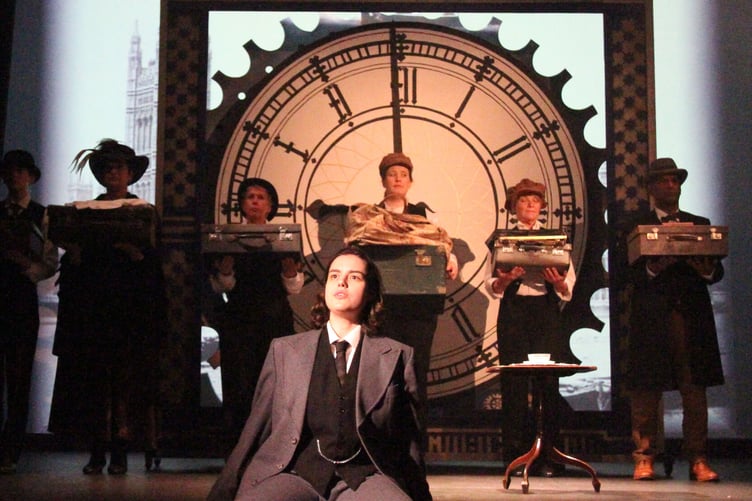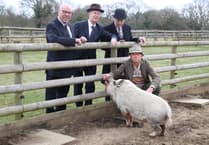How do you get 19 people, of all ages, from London, across three continents, facing unknown and unexpected setbacks, back to London in two and half hours without leaving Haslemere? You give the challenge to Ruth Ahmed, that’s how.
Haslemere Thespians treated their enthusiastic audience to a thrilling journey in their production of Around The World In 80 Days, adapted from the much-loved classic by Jules Verne – the tale of the intrepid Phileas Fogg and his valet Passepartout.
There are four principal characters. It is hard to imagine anyone better as Phileas Fogg than Richard Weller. His inner journey from buttoned-up, conservative Englishman to compassionate, warm romantic was subtly done. It allowed the lovely Mrs Aouda, played with charm and grace by Caroline Thompson, to get under his skin.
Sara Klusch portrayed Passepartout with warmth and just the right amount of humour. Inspector Fix, the ever-engaging Paul Bailey, was always there, scheming in the background, wily, dogged and determined to get his man.
The set and staging were wonderful, costumes perfect. A huge clock face, recognisably that of Big Ben, dominated and featured, either as a whole or in parts, throughout.
A series of beautiful illustrations were projected on to the back as the travellers moved from place to place. In the opening scene, Phileas Fogg’s meticulous habits and cool-headed English stiffness are captured perfectly in the pattern of his repetitive daily routine.
The constant movement of travelling was represented by the cast in a choreographed walking dance pattern that repeated each time the travellers moved on. Many of these transitions were in silhouette, with occasional tableaux.
The walking dance was underscored by a hypnotic musical theme, composed for the show by Chris Snelling. Add to this the creative and powerful sound and lighting design and execution, from Mark Raggett and Adrian Stent respectively, and you have a multi-sensory experience to remember.
It was interesting that the tempo of the music and the walking dance was quite slow, rather than echoing the hustle-bustle of a race against time. The movements of trains and ships and elephant riding were cleverly depicted by the cast.
In the second act there was a marvellous slow-motion fight with bandits on a train. Overall, the second act was pacier and full of excitement as Fogg raced home. We were treated to a fight, a circus and a wonderful storm at sea before the final victory scene in the Reform Club.
Sara Wilson-Soppitt





Comments
This article has no comments yet. Be the first to leave a comment.